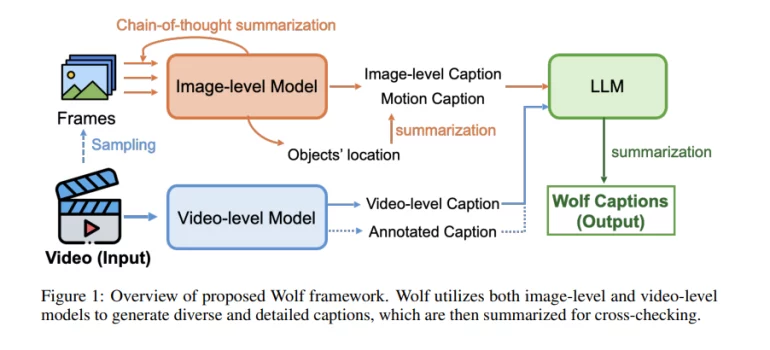- Video captioning is essential for accessibility and searchability but faces significant challenges.
- The Wolf framework, developed by leading research institutions, significantly advances video captioning.
- Wolf enhances caption quality and similarity through the introduction of the CapScore metric.
- The framework integrates image-level and video-level models for more accurate captions.
- Wolf Benchmark includes comprehensive datasets, contributing to improved captioning standards.
- The framework and resources will be open-sourced to encourage industry-wide innovation.
Main AI News:
Video captioning is crucial for improving content accessibility and searchability. Yet, it remains a challenging task due to the complexity of video content and the scarcity of high-quality labeled data. To tackle these issues, a research team from NVIDIA, UC Berkeley, MIT, UT Austin, the University of Toronto, and Stanford University has developed the World Summarization Framework (Wolf). This novel approach significantly advances video captioning capabilities.
Wolf stands out by enhancing CapScore, a new LLM-based metric for evaluating caption quality. Compared to GPT-4V, CapScore achieved a 55.6% improvement in quality and a 77.4% boost in similarity. The framework combines image-level and video-level models to produce detailed and accurate captions, which are then refined through a summarization process.
Using models like CogAgent, GPT-4V, VILA-1.5, and Gemini-Pro-1.5, Wolf’s innovative approach has shown superior performance over existing solutions. The team hopes Wolf will set a new benchmark in the industry, driving further developments in video captioning.
Conclusion:
The introduction of the Wolf framework marks a significant shift in the video captioning market, offering superior accuracy and quality in caption generation. This advancement sets a new standard, likely prompting further innovation and competition within the industry. By open-sourcing the framework and its resources, the research team has positioned Wolf as a leading solution and fostered an environment conducive to rapid development and adoption. Companies that leverage this technology will gain a competitive edge, improving content accessibility and user engagement in a market where precision and inclusivity are increasingly critical.

